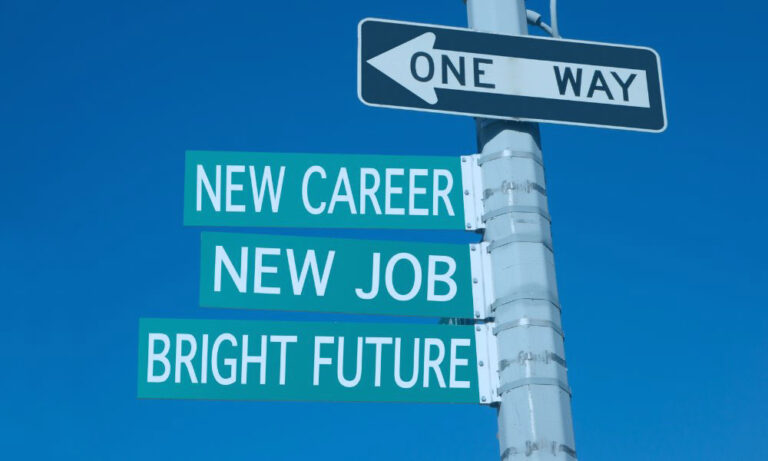Navigating a Career Change: How to Effectively Mention It in Professional Settings
Changing careers is a significant and often necessary step for many professionals. Whether motivated by personal growth, industry changes, or the pursuit of passion, transitioning careers requires strategic communication and preparation to address various challenges. In this section, we will delve into the underlying reasons prompting career change and the associated challenges, providing comprehensive insights and resources for effectively navigating this process.
Understanding the Career Change
Understanding a career change involves analyzing the core motivations behind the decision and the challenges that come with it. Professionals need to be prepared to articulate these aspects convincingly to prospective employers, highlighting their adaptability, relevant skills, and readiness for the new role.
Reasons for Changing Careers
Personal Growth
Personal growth is a common motivator for changing careers. Individuals often seek new challenges and learning opportunities to enhance their skills and knowledge. For instance, a software developer might decide to shift into data science to explore more complex, analytical problems and diversify their expertise. Exploring career opportunities that align with personal and professional growth aspirations can lead to increased job satisfaction and overall well-being. More information on this can be found on the American Psychological Association’s website
Industry Instability
Another compelling reason is industry instability. With the rapid evolution of technology and global trends, certain industries face decline, prompting professionals to transition to more stable, growing fields. For example, advances in renewable energy technologies might influence professionals in the fossil fuel industry to shift their careers. The U.S. Bureau of Labor Statistics provides comprehensive data on industry trends to help professionals make informed decisions.
Pursuing a Passion
The desire to align one’s career with personal passions and interests is another significant factor. A corporate lawyer, for instance, might decide to shift into environmental law to align their profession with their passion for environmental conservation. Professionals can explore various resources, including career assessment tools to identify careers that align with their interests and passions.
Challenges Faced
Skill Gaps
One of the primary challenges faced during a career change is the skill gap. Transitioning to a new field often requires acquiring new skills and knowledge. Professionals can bridge this gap through online courses, workshops, and certifications. Websites like Coursera offer a plethora of courses across various fields to help in this transition.
Employer Skepticism
Employer skepticism is another hurdle. Employers might be wary of hiring someone who does not have extensive experience in the field. Professionals can mitigate this by effectively communicating their transferable skills, adaptability, and the insights they bring from their previous careers. Crafting a compelling career change cover letter and resume is crucial, and resources like LiveCareer can provide valuable templates and tips.
Transition Stress
The process of changing careers can be stressful, involving stepping out of one’s comfort zone, facing uncertainties, and adapting to a new professional environment. Coping strategies, including seeking support from mentors, networking, and focusing on incremental progress, can be instrumental. The American Psychological Association offers extensive resources on managing stress during transitions like career changes.
In conclusion, understanding the reasons and challenges associated with a career change is pivotal for successful navigation. By exploring personal motivations, industry trends, and coping strategies, professionals can position themselves effectively to embark on a new career journey, equipped with the necessary resources and resilience.
Preparing to Communicate the Career Change
Preparing to communicate a career change entails a thorough evaluation of your skills and experience and the crafting of a compelling narrative that underscores your readiness and fit for the new role. This preparation phase is integral to ensure that prospective employers perceive the transition as a strength rather than a limitation. Below, we delve into key strategies to effectively assess and communicate your career change.
Evaluating Skills and Experience
Transferable Skills
Identifying and articulating transferable skills is the cornerstone of communicating a career change effectively. These are skills that are relevant and applicable across different industries and roles. For instance, project management, problem-solving, and communication skills are valued in numerous professions. The U.S. Department of Labor’s O*NET OnLine tool is invaluable for professionals seeking to identify and articulate these skills, offering detailed occupation profiles that outline the skills, knowledge, and abilities pertinent to various jobs.
Acquired New Qualifications
Acquiring new qualifications tailored to the targeted field can significantly bolster one’s profile. This can involve obtaining certifications, attending workshops, or enrolling in courses to gain industry-specific skills. Institutions like Harvard Extension School offer an array of courses and certificates that can be instrumental in equipping professionals with the requisite skills and knowledge.
Relevant Experience
Gathering and presenting relevant experience, including volunteering, internships, or projects undertaken during the transitional phase, is crucial. This demonstrates hands-on experience and application of newly acquired skills. VolunteerMatch is an excellent platform for finding volunteering opportunities to gain and demonstrate relevant experience.
Crafting Your Narrative
Positive Framing
Positioning the career change positively is essential. Professionals should emphasize the skills and insights gained from their previous careers and how these can be instrumental in the new role. It’s about showcasing adaptability, versatility, and a multi-faceted skill set. Resources on Forbes provide insights on positive framing techniques.
Addressing the Change Proactively
Being proactive in addressing the career change can alleviate potential employer concerns. This involves being upfront about the change and articulating a clear rationale and the steps taken to ensure a seamless transition. The Balance Careers offers excellent tips on addressing career changes in cover letters.
Aligning with Future Goals
The narrative should align the career change with future professional goals, illustrating a strategic, forward-looking decision rather than an arbitrary move. The Harvard Business Review has a wealth of information on how to weave this narrative effectively, ensuring it resonates with prospective employers.
In essence, preparing to communicate a career change is a strategic process that involves a meticulous assessment of skills and crafting a narrative that not only addresses the change but also underscores the unique value proposition the professional brings to the table. Adopting a positive, proactive, and strategic communication approach is pivotal to navigating and succeeding in the new career path.
Mentioning Career Change in Job Applications
Addressing a career change in job applications is a crucial step that requires strategic planning to ensure that potential employers view the transition positively. The key lies in effectively optimizing your resume and crafting a persuasive cover letter that together, underscore your suitability and potential contributions to the new role.
Resume Optimization for Career Change
Tailoring Resume Content
The first step in mentioning a career change in job applications involves tailoring your resume content to align with the new industry or role. This entails emphasizing relevant skills and experiences and using keywords that resonate with the new field. Information on how to tailor a resume can be found on The Muse which provides practical advice on making each section of the resume relevant.
Highlighting Transferable Skills
Focus on transferable skills that are applicable across various fields. These skills can be highlighted in a dedicated section or woven into the professional experience section to demonstrate your capability to excel in the new role. The U.S. Department of Labor provides detailed insights on identifying and presenting transferable skills.
Including Additional Qualifications
It is also imperative to include additional qualifications obtained to bridge the skill gap for the new career. This shows commitment and preparedness for the new role. For further guidance, visit Zety which offers tips on optimizing resumes for career changers, including presenting new qualifications effectively.
Cover Letter Strategies
Storytelling Approach
Implementing a storytelling approach in the cover letter can be highly effective. This involves narrating your career journey, the rationale behind the career change, and how your past experiences make you a suitable candidate for the new role. More on the storytelling approach can be read at Career Sidekick.
Addressing Career Change Directly
Being direct and open about the career change is crucial. Clearly explain the reason behind the change and emphasize your enthusiasm and readiness for the new career. The Balance Careers provides sample cover letters and writing tips for professionals undergoing a career change.
Demonstrating Value Proposition
Highlight your value proposition, focusing on how your unique combination of skills, experiences, and perspective from your previous career can be beneficial in the new role. The Harvard Business Review offers strategic advice on effectively communicating one’s value proposition.
Navigating through the process of mentioning a career change in job applications requires a blend of strategic resume optimization and compelling cover letter writing. By tailoring content, emphasizing transferable skills and new qualifications, and employing a persuasive narrative, career changers can effectively communicate their suitability and value for new roles in the job market.
Discussing Career Change in Interviews
When discussing a career change during interviews, preparation and communication are paramount. Interviewees should be ready to articulate their motivations, adaptability, and the value they bring to the new role. Below, we explore effective strategies to prepare and communicate your career transition during interviews, aiming to instill confidence in potential employers regarding your fit and potential contributions to the new role.
Preparing Your Responses
Anticipating Questions
Anticipating and preparing for questions related to your career change will enable you to provide articulate and confident responses. Interviewers may inquire about your motivations, the steps you’ve taken to facilitate the transition, and how your previous experience relates to the new role. Indeed offers insights on common questions and how to prepare for them.
Framing Responses
It’s essential to frame your responses positively, focusing on the skills, knowledge, and insights gained from your previous career that are applicable to the new role. Demonstrating how these elements, combined with any additional qualifications obtained, make you an asset can be pivotal. For in-depth guidance on framing responses, Monster provides valuable tips for career changers.
Building Confidence
Building confidence involves thorough preparation, practice, and self-reflection. Engaging in mock interviews, understanding the new industry’s landscape, and articulating how your journey equips you to contribute significantly can be helpful. Glassdoor has extensive resources to help build confidence through preparation.
Communicating Your Journey
Sharing Your Motivation
Clearly communicating the motivations behind your career change is essential. Whether it’s a pursuit of passion, personal growth, or adapting to industry shifts, being explicit and genuine about your motivations can build credibility. Forbes offers insights on effectively conveying these motivations.
Demonstrating Adaptability
Showcasing your adaptability is pivotal. Focus on specific instances where you adapted to new environments, learned new skills, or navigated changes successfully. This proves your capability to transition smoothly into a new career. Resources on LinkedIn provide perspectives on showcasing adaptability in professional settings.
Highlighting Skills and Learning Curve
Emphasize the skills you’ve gained and the learning initiatives undertaken to align with the new career. Detailing your learning curve and the tangible steps taken to acquire requisite skills and knowledge underscores your commitment and readiness. CareerBuilder provides insights on highlighting this aspect effectively.
Effectively discussing a career change in interviews requires strategic preparation and authentic communication. By anticipating questions, positively framing responses, and communicating your journey with clarity and conviction, you can turn the career change into a compelling narrative that underscores your value, adaptability, and potential contributions to the new role.
Leveraging the Career Change for Growth
A career change, though challenging, can be a powerful catalyst for professional and personal growth. By adapting post-change and building robust professional relationships, individuals can leverage the transition to realize enhanced career trajectories and fulfillment. The strategies below illuminate pathways to optimize the career change, underscoring adaptability, learning, and networking as central tenets.
Post-Change Adaptations
Continuous Learning
Continual learning is fundamental to adapt and thrive post-career change. Embracing opportunities to enhance skills and knowledge not only facilitates adaptation but also propels career progression. Online platforms like edX offer courses from top universities and organizations worldwide, enabling continuous learning in various fields.
Seeking Feedback
Seeking feedback is pivotal for refinement and improvement. Engaging colleagues, supervisors, and mentors to provide insights on your performance can unveil areas for enhancement and growth. Harvard Business Review provides strategies for effectively soliciting and utilizing feedback for professional development.
Adapting to New Roles
Adaptation to new roles involves understanding the specific expectations, culture, and dynamics of the new career field. Initiatives such as job shadowing, consulting with peers, and studying industry trends can facilitate this adaptation. The CareerOneStop sponsored by the U.S. Department of Labor, offers resources for adapting to new career roles.
Building Professional Relationships
Networking in the New Field
Networking is instrumental to unearth opportunities, gain insights, and foster professional relationships in the new field. Platforms like LinkedIn facilitate connections with industry professionals, while industry associations and events offer networking opportunities. Articles on Forbes provide insights into networking strategies specific for career changers.
Seeking Mentors
Mentors provide guidance, support, and insights to navigate the new career landscape effectively. Organizations such as SCORE offer free mentorship to professionals in various fields. Connecting with industry professionals on platforms like LinkedIn can also facilitate mentorship opportunities.
Engaging in Professional Development
Professional development activities such as workshops, conferences, and certifications can bolster skills and knowledge, enhancing adaptability and competence in the new field. The Association for Talent Development offers resources and opportunities for professional development across various fields.
In essence, leveraging a career change for growth is anchored in post-change adaptations and building professional relationships. By prioritizing continuous learning, seeking feedback, and adapting to new roles, alongside networking, seeking mentorship, and engaging in professional development, individuals can transform the career change into a profound opportunity for advancement and fulfillment.
Navigating through a career change entails a series of thoughtful considerations, meticulous preparations, and strategic actions. From understanding the underlying motivations and associated challenges to effectively communicating the change in job applications and interviews, each phase is pivotal to ensure a smooth and successful transition.
Key Takeaways
The journey of transitioning careers is interspersed with self-discovery, learning, and adaptation. A deliberate assessment of transferable skills, acquiring new qualifications, and tailoring job application materials to resonate with the new field are essential steps. Further, preparing for interviews, anticipating questions related to the change, and communicating the transition effectively are integral to instill confidence in potential employers. Resources on platforms like Indeed offer comprehensive guides and tips for professionals contemplating or navigating through career changes.
Emphasizing the Positive Aspects of Change
Career change, though accompanied by challenges, opens avenues for growth, learning, and revitalization in one’s professional journey. The transition allows professionals to align their careers with personal passions, interests, or emerging industry trends, fostering increased job satisfaction, and fulfillment. A wealth of positive aspects, including diversified skills, broader perspectives, and enhanced adaptability, characterize career transitions. Fast Company has articulated the positive impacts of career change and steps to navigate it effectively.
Inspiring Action and Adaptability in the Face of Career Transitions
As the landscape of work continues to evolve, adaptability, lifelong learning, and the ability to navigate career transitions effectively are becoming increasingly valuable. Career changes, when approached with strategic preparation, resilience, and a learning mindset, can unveil unprecedented opportunities and pathways for growth. Inspiring action involves taking tangible steps to prepare, adapt, and thrive amidst the change, viewing each transition as an opportunity for reinvention and growth. The American Psychological Association provides insights into human adaptability and strategies to manage change effectively.
In essence, career changes embody both challenges and opportunities. By strategically navigating through the phases of understanding, preparation, communication, and adaptation, professionals can leverage career transitions as powerful catalysts for growth, learning, and fulfillment, turning the narrative of change into a story of opportunity, progression, and renewal.







